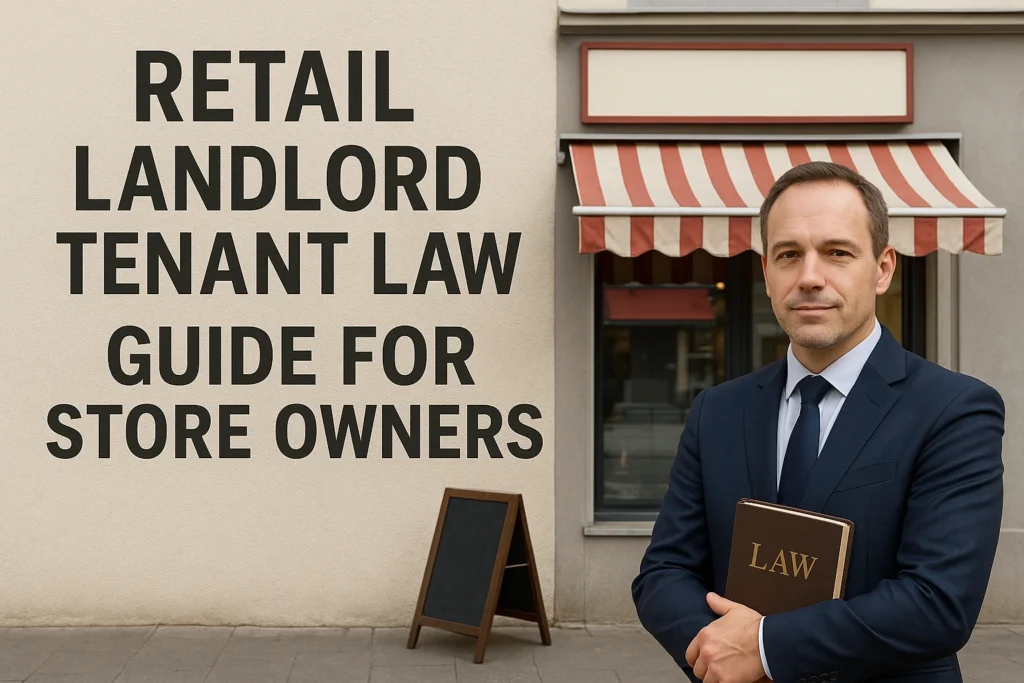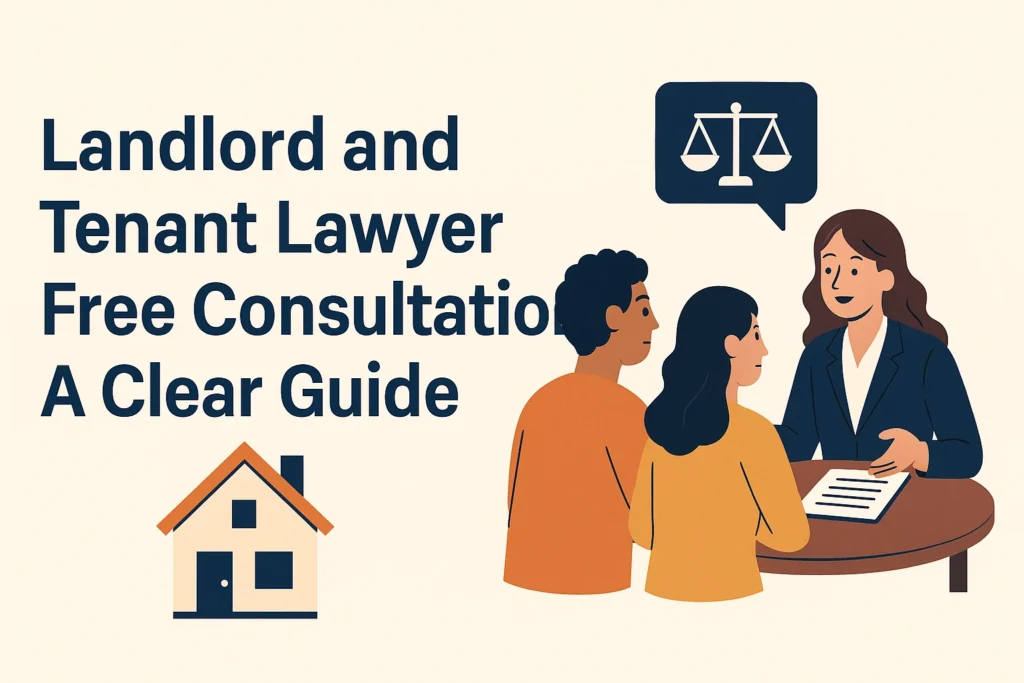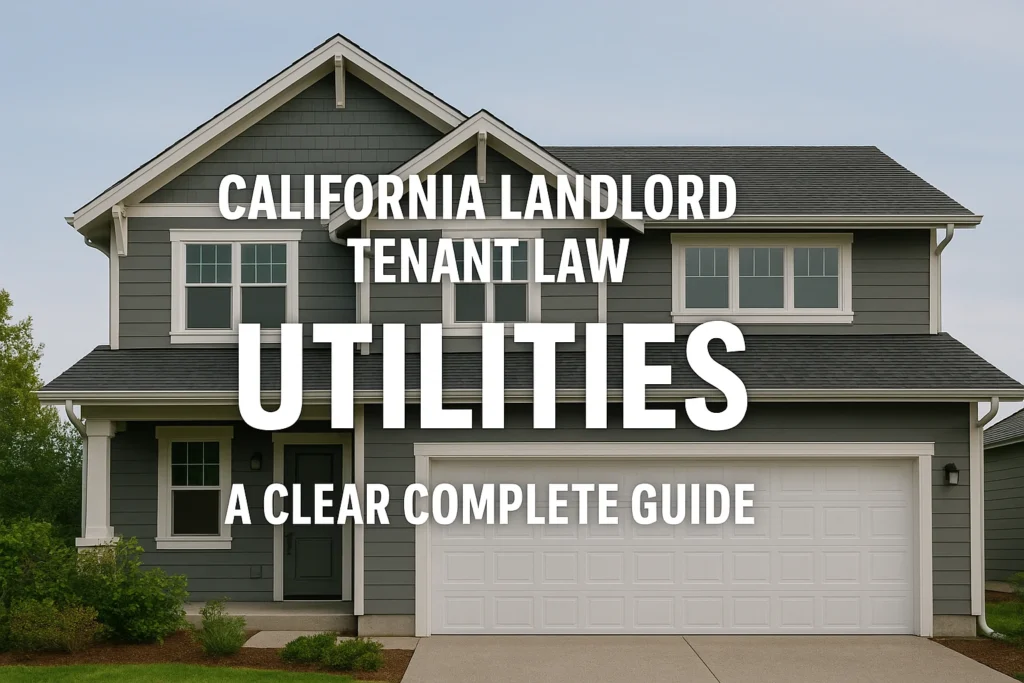Retail leases move under bright lights and steady buzz. Customers walk past glass walls and judge shops in seconds. Landlords chase foot traffic and percentage rent. Tenants guard brand image and thin margins. State law steps in and sets rules that shift from city to city. Office and apartment codes never match the pulse of a mall corridor.
A retail lease places profit on the line in every clause. Sign size, store hours, music volume, and holiday displays can appear in the document. One hidden radius clause can trap a brand inside a zip code. A slip on co‑tenancy or exclusive use can wipe out an entire sales season.
This guide steers shop owners and landlords through that maze. Each section uses clear words, short lines, and solid facts. Read on and walk into the deal table with firm ground under both feet.
Retail Lease Basics
A retail lease is a signed pact between a property owner and a store owner. It grants the store owner the right to sell goods or services in a set spot. The lease lists base rent, term length, use rights, and upkeep duties.
Most retail leases run three to ten years. Many add options that let the tenant tack on extra years at a set rate. Courts expect both sides to honor each clause. A vague pact can drain profit and spark fights.
Rent in a retail pact can carry more parts than rent in an office pact. Base rent starts the count. Common area fees, property tax, and insurance can join the bill in a “triple net” or NNN lease. A clear table of charges keeps costs in view.
Sales data can tie into the final rent. A “percentage rent” clause lifts rent once gross sales pass a set mark. This term lets the landlord share in store growth, yet it pushes risk onto the tenant in slow seasons. A smart tenant demands a high sales break point and clear audit rules.
Retail leases often list build‑out duties. A tenant may fund shelves, lights, and signs while the landlord funds base walls, HVAC, and a clean floor. Each duty must land in the pact with price caps and target dates.
Personal guarantees can appear in small print. A landlord may want the owner’s name on the lease if the store is a new firm. A firm cap on time or dollars can trim risk for the guarantor.
Use rules to shape brand image. A lease may block loud music, neon signs, or late hours. Some pacts grant a tight radius of exclusive use, so no rival opens next door. Read each word and test each rule before ink hits the page.
Rights of Retail Tenants
Retail tenants hold the right to quiet use and enjoyment. The landlord must let trade flow without loud work, trespass, or threat that could scare buyers away. If a jackhammer runs near the fitting rooms at noon, the tenant can demand a stop.
Tenants also own the right to a safe sales floor. Lights, exits, and aisles must meet code. Wet tiles or loose wires endanger staff and shoppers. Proof of danger can let the tenant halt rent or end the pact. State law backs swift action when safety falls short.
Retail tenants can shape lease terms before they sign. State contract law treats both sides as equal. Clear talks can cap rent hikes, set repair duties, or add early exit rights. A tenant may secure a co‑tenancy clause that cuts rent if an anchor store leaves.
Signage rights matter in retail. A tenant can push for marquee space or window decals that match brand style. Courts uphold sign terms once both sides ink the pact.
Sales audit rights guard cash flow. A tenant may inspect the landlord’s share of the percentage rent math to block hidden fees. Fair audit rules protect trust and profit.
Notice and cure rights close the list. The landlord must serve written notice before default claims move to court. The tenant then gains days to pay, fix, or dispute the charge. Clear cure windows keep doors open and sales live.
Landlord Duties in Retail Spaces
The landlord must keep all shared zones safe and bright. Halls, lifts, restrooms, and car lots need solid rails, clear signs, and strong lights. Snow, ice, or loose tiles can cause falls. A hurt customer can sue both the store and the landlord, so daily checks and swift fixes matter.
A landlord must inspect common zones often and record each result. Good records prove due care if a claim arises. The landlord also must use CAM fees only on upkeep listed in the lease. Honest books and yearly statements shield the landlord from audit disputes.
Repairs must follow prompt timelines. A roof leak can stain stock. A dead air unit can force shoppers out. The lease should set firm hours for emergency fixes and clear days for non‑urgent work. Delay lets the tenant seek rent credit or sue for lost sales. Courts back tenants who show proof of damage plus slow action.
Utilities also fall under the landlord’s scope in most malls. Power, water, and climate control must stay on during posted store hours. Any shut‑off outside a brief outage can breach the lease unless force majeure applies.
The landlord must honor exclusive use and co‑tenancy clauses. If the lease grants a shoe store the sole right to sell sports shoes, the landlord cannot place a rival two doors away. If an anchor store leaves, a co-tenancy clause may let smaller stores cut rent or leave. Courts enforce these promises once proof of breach appears.
A mall thrives when the landlord meets each duty. Tenants see steady foot flow, safe aisles, and fair rivals. The landlord gains strong rent and low claims. Clear words in the lease plus firm action on site turn these duties into daily practice.
Common Retail Lease Clauses
Percentage rent: This clause adds extra rent once sales pass a base mark. Landlords gain a slice of growth. Tenants need audit rights and a clear break point to guard cash in slow months.
Co‑tenancy clause: Anchor stores drive foot traffic. If one departs, sales can drop. A co‑tenancy clause lets the tenant cut rent or exit when that loss appears. List key anchors and set firm time limits before relief starts.
Tenant improvement allowance: Retail fit-outs cost more than office trim. A landlord may fund part of the work through cash or rent credit. Terms must state dollar caps, draw rules, and dates. A clear plan keeps the build on track.
Go‑dark rule: Landlords want active windows, not dark glass. A go‑dark rule forces the store to stay open or pay a fee. Tenants should limit hours and gain curbside rights, such as pop‑up use, to avoid default.
Radius clause: A tenant may not open a rival shop within a set mile range. Landlords use this rule to keep sales inside the center. Tenants must map growth plans and trim the radius or term if the scope feels too wide.
Each clause can lift or cut profit. Read each line, seek edits, and keep a clean signed copy in paper and digital form.
Dispute Paths in Retail Leases
Retail lease disputes often arise over sudden rent hikes, slow repairs, or broken exclusive use promises. Common area fee audits and late handover of space also trigger conflict. Each problem can drain foot traffic and cut profit.
Most leases set a clear path of notice, cure, and then mediation. The tenant must send a written alert and give the landlord a short window to fix the breach. Skipped steps can block any later claim in court.
Mediation places both sides at one table with a neutral guide. Costs stay modest and trade can continue. If the session ends without a deal, a tenant may ask a judge for an urgent order to halt harm, such as a rival shop next door.
Many retail pacts shift serious fights to private arbitration. This route often moves faster than a public trial and keeps sales figures out of view. Appeal rights stay narrow, so the initial award may stand even if errors appear.
Settlement remains possible at every point. Parties can trim rent, adjust repair duties, or agree on an exit fee. Detailed records of notices, sales drops, and repair logs give strong leverage during each talk.
Before You Sign a Retail Lease
Hire a lawyer who knows retail deals inside out. A fee that matches one month of rent can shield you from hidden traps that bleed cash for years. Retail clauses run deeper than office terms, so you need counsel who has seen percentage rent math, radius limits, and co‑tenancy triggers.
Visit the site at peak trade hours instead of a quiet morning. Count shoppers, measure car flow, and note if drivers can spot your sign from the main road. Stand near the door and track dwell time. Crowds at noon and empty aisles at dusk send a clear signal about sales potential.
Demand a full cost sheet before you sign. Base rent tells only half the story. Taxes, insurance, and common zone fees can double the bill. Triple net terms pass nearly every cost to the tenant. Ask for three years of past CAM statements and utility data to test each figure.
Lock down co‑tenancy and exit rights in writing. Malls rise or fall on anchor stores. If a big name leaves, traffic drops, and small shops suffer. Secure a clause that slashes rent or grants a clean exit once key anchors shut their doors or foot traffic sinks below a set count.
Before you sign, speak to a lawyer who handles commercial leases. A free landlord and tenant lawyer consultation can help you spot risks early.
Conclude
Retail landlord‑tenant law offers vast room to tailor each lease. A clear clause on rent, repairs, and exit rights locks profit in place. Rules on signs, music, and sales audits guard the brand’s soul and keep trade smooth.
Power rests in patience and proof. A store owner who reads every line, asks sharp questions, and stores each note gains weight at the table. Lawyers, market data, and past cost sheets act as armor against vague words.
A firm lease plus neat records form a shield in court or talks. Safe staff, steady stock, and sure margins flow from strong paper. Put time into the pact now and earn calm days on the sales floor for years.
People Asked Questions
What is a radius clause in a retail lease?
A radius clause blocks a tenant from opening a similar store nearby. It protects the landlord’s mall from losing sales to a second location.
Can I break a retail lease if foot traffic drops?
Only if your lease has a co-tenancy or traffic clause. Without it, low traffic alone may not let you exit early.
What rights do retail tenants have during renovations?
Tenants have the right to quiet use and safe space. If work blocks access or scares off buyers, you can ask for relief or stop rent.
This guide gives general legal facts. It does not give legal advice. Speak to a licensed lawyer in your state about your case



